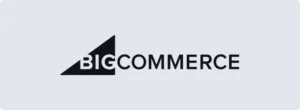Key Takeaways:
- High-quality aftermarket visuals enhance customer trust, improve product discoverability, and ultimately boost sales.
- Visual asset management involves the systematic organization, storage, and retrieval of visual content such as images, videos, and diagrams, ensuring consistency across all platforms and channels.
- By implementing best practices for visual asset management, manufacturers can improve operational efficiency, enhance customer experiences, and drive higher sales.
Great visual assets lead to increased sales, higher customer satisfaction, and more trust in your automotive brand.
This blog aims to provide automotive parts manufacturers with best practices for visual asset management. We will explore how software solutions can streamline this process, ensuring it is organized, consistently updated, and accessible.
Great visual assets matter to aftermarket customers
In today’s fast-paced, visual world, statistics show that visual assets are absolutely essential to a successful eCommerce strategy.
- High-Quality Images Increase Conversion Rates: According to MDG Advertising, 67% of consumers say that the quality of a product image is “very important” in selecting and purchasing a product.
- Multiple Images Boost Engagement: eBay’s research shows that listings with multiple images are 5 times more likely to sell than those with only one photo.
- Visual Content is Preferred: HubSpot found that 32% of marketers say visual images are the most important form of content for their business.
- Images Enhance Trust: A survey by Salsify revealed that 60% of consumers need to see an average of 3-4 images when shopping online to feel confident in making a purchase.
- Impact on Return Rates: According to Adobe, clear and detailed product images can reduce return rates by providing customers with a more accurate representation of the product.
- Influence on Purchasing Decisions: A study by BigCommerce found that 78% of online shoppers want products to be brought to life with images, and 30% of online shoppers prefer to see multiple angles of the product.
- Mobile Shopping and Images: Google reports that mobile searches for “images” have increased by 60% over the past two years, indicating the growing importance of visual content in mobile commerce.
These statistics underscore the critical role that high-quality, detailed images play in influencing online shoppers’ purchasing decisions and overall satisfaction.
Understanding Visual Asset Management
What is Visual Asset Management?
Visual asset management is the systematic organization, storage, and retrieval of visual content such as images, videos, and diagrams. In the automotive industry, this practice is essential for maintaining accurate and high-quality representations of products, which are crucial for both marketing and sales efforts.
Importance to the Automotive Industry
In the automotive industry, where product variety and complexity are high, visual asset management helps manufacturers present their products effectively to customers and partners.
There are both direct and indirect benefits for automotive part manufacturers who take control of their Visual Asset Management process:
- Increased Customer Trust: High-quality and accurate visuals build customer confidence in the product, leading to increased sales.
- Improved Discoverability: Well-managed visual assets improve search engine rankings and product discoverability online.
- Operational Efficiency: Centralized visual asset management reduces the time and effort needed to update and distribute visual content.
- Consistent Branding: Ensures that all visual content aligns with the brand’s standards and is consistent across all marketing channels.
- Better Marketing and Sales: High-quality visuals support more effective marketing campaigns and sales strategies.
How ACES and PIES intersect with Visual Asset Management
ACES (Automotive Catalog Exchange Standard) and PIES (Product Information Exchange Standard) are critical standards in the automotive parts industry that facilitate the efficient exchange and management of product information.
Visual asset management plays a crucial role in this ecosystem. It ensures that visual content, such as images and videos, is seamlessly integrated with product data to enhance the information’s overall accuracy, consistency, and usability.
Here’s how ACES and PIES intersect with visual asset management:
| Benefit | Description |
| Centralized Data | ACES and PIES software centralize all product data, including visual assets, for easier management and updates. |
| Standardized Formats | Ensures consistent naming, categorization, and storage of visual assets, facilitating easy retrieval and use. |
| Improved Accuracy | Integrates visual assets with product data to ensure accurate association and reduce errors. |
| Streamlined Updates | Enables simultaneous updates of product information and visual assets, maintaining current and accurate data. |
| Enhanced Searchability | Allows easy search and retrieval of visual assets based on product specifications, boosting marketing efficiency. |
| Better Customer Experience | Provides consistent and accurate visual assets, enhancing the customer experience and increasing sales. |
Best practices for Visual Asset Management
- Organizing and Categorizing Visual Assets
| Method | Description | Benefits |
| Hierarchical Folder Structure | Organize assets into a clear, hierarchical folder structure based on categories. | Easier navigation and retrieval of visual assets. |
| Descriptive File Names | Use descriptive file names that include product name, part number, and date. | Improved identification and management of assets. |
| Version Control | Keep track of different versions of visual assets. | Ensures access to the most current and accurate files. |
| Metadata Enrichment | Attach metadata to visual assets for detailed descriptions and keywords. | Enhanced searchability and retrieval. |
| Effective Tagging | Use tags to categorize and classify visual assets. | Quick and accurate search and retrieval. |
Importance of Metadata and Tagging
- Metadata Enrichment: Attach metadata to visual assets to include details such as product specifications, usage instructions, and keywords.
- Effective Tagging: Use tags to categorize and classify visual assets, making them easier to search and retrieve.
- Improved Searchability: Metadata and tagging enhance the searchability of visual assets, allowing for quick and accurate retrieval when needed.
- Ensuring Consistency and Quality
| Tip | Description | Benefits |
| High-Resolution Images | Ensure all visual assets are high-resolution. | Clear and detailed product representations. |
| Consistent Lighting and Angles | Use consistent lighting and angles for product photos. | Uniform appearance across all visuals. |
| Professional Editing | Utilize professional editing software to enhance and standardize quality. | Improved visual quality and standardization. |
| Brand Consistency | Standardize visual assets to align with the brand’s visual identity. | Stronger and more cohesive brand presence. |
| Customer Trust | Maintain high-quality and consistent visuals. | Builds customer trust and confidence in the product. |
- Regular Audits and Updates
| Step | Description | Benefits |
| Schedule Regular Audits | Set a schedule for periodic audits of visual assets. | Ensures ongoing accuracy and relevance of assets. |
| Create an Audit Checklist | Develop a checklist of items to review during the audit. | Systematic and thorough review process. |
| Update and Archive | Update visual assets as needed and archive outdated files. | Maintains an organized and current repository. |
| Ensure Accuracy | Identify and correct outdated or incorrect visual assets. | Keeps product information accurate and reliable. |
| Compliance | Ensure visual assets comply with industry standards and regulations. | Maintains industry compliance and standards adherence. |
Set your automotive brand up for success
We encourage automotive parts manufacturers to implement these best practices for visual asset management. By utilizing tools like PIM software, you can ensure your visual assets are well-organized, high-quality, and up-to-date, ultimately enhancing your marketing and sales efforts.
Contact PDM Automotive to see how we can help you streamline your visual asset management and drive your business forward.
Button: Book a personalized data assessment


